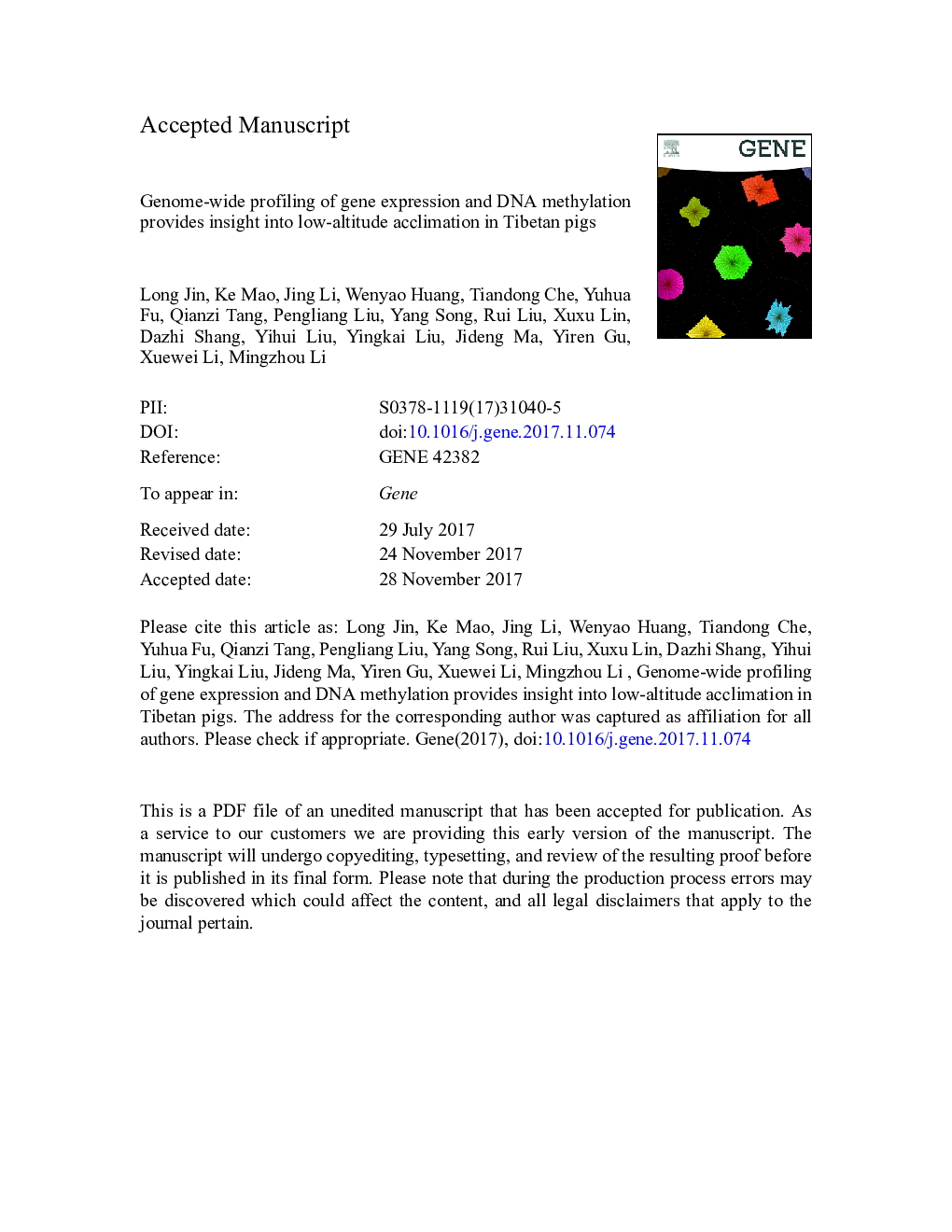| Article ID | Journal | Published Year | Pages | File Type |
|---|---|---|---|---|
| 8646127 | Gene | 2018 | 35 Pages |
Abstract
Efforts have been made to characterize the high-altitude adaption in Tibetan pigs and identified vast of genes or genomic regions undergone natural selection. Nonetheless, information concerning gene expression and DNA methylation changes response to low-altitude acclimation in Tibetan pigs is long overdue. To explore the exceptional mechanisms of gene expression and DNA methylation that are induced by low altitude environments in Tibetan pigs, we performed a comparative transcriptomic and DNA methylation analysis of skeletal muscle between indigenous Tibetan pigs that reside in high altitude regions (~Â 4000Â m) and their counterparts that migrated to the geographically neighboring low-altitude regions (~Â 500Â m) for nearly ten generations. Many genes that related to hypoxia response (EGLN3 and FLT1) and energy metabolism (TFB2M) were differentially expressed, but without significant DNA methylation changes. We also found genes embedded in differentially methylated regions were mainly involved in 'Starch and sucrose metabolism', 'glucuronosyltransferase activity' processes. Specifically, our results showed increased SIN3A mRNA expression, with hypomethylation status of its promoter, in longissimus dorsi muscle of low-altitude Tibetan pig. Another gene, CACNG6, showed decreasing expression level with an elevated methylation in its intron 3. These results indicated DNA-methylation-mediated expression alterations in low-altitude acclimation. We envision that this study will serve as a valuable resource for mammal acclimation research and agricultural food industry.
Keywords
CPCTSSFLT1fms-related tyrosine kinase 1TFB2MALDOBHCPSTESICPSKDRGEOlincRNATibetan pigsMitochondrial DNA copy numberDMRsPCAQuantitative PCRq-PCRhigh-altitudeBINPrincipal component analysisbisulfite sequencingintermediateBinomialDistaltranscription start siteRINAdaptationRNA Integrity NumberFructose-1,6-bisphosphate aldolaseCoding Potential CalculatorDifferentially expressedDNA methylationdifferentially methylated regionsGene ontologyProximalGene Expression Omnibus
Related Topics
Life Sciences
Biochemistry, Genetics and Molecular Biology
Genetics
Authors
Long Jin, Ke Mao, Jing Li, Wenyao Huang, Tiandong Che, Yuhua Fu, Qianzi Tang, Pengliang Liu, Yang Song, Rui Liu, Xuxu Lin, Dazhi Shang, Yihui Liu, Yingkai Liu, Jideng Ma, Yiren Gu, Xuewei Li, Mingzhou Li,
